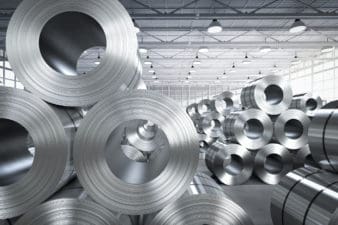The sharp collapse in commodities continues to worsen. The Scotiabank Commodity Price Index for August 2015 has fallen by 10.5% month over month, and the bad news doesn’t stop there. The index is now 14% lower than it was in August 2009 at the height of the global financial crisis, and there are signs that commodity prices will sink even lower.
Let me explain.
Now what?
The key driver of the pessimism surrounding the outlook for commodities rests squarely with concerns over China’s economy. Not only is 2015 GDP growth forecast to be at its lowest level in over two decades, but a number of crucial economic sectors that support the demand for commodities appear to be caught in protracted slumps.
Activity in China’s real estate sector, a major consumer of steel as well as base metals, remains in terminal decline, with investments in the sector for May 2015 plunging to its lowest level year-to-date. This can be attributed to the considerable housing and commercial real estate inventories that arose because of the sector having massively overbuilt at the height of China’s economic boom.
What investors don’t realize is this inventory is so vast it could take years for it to be occupied, particularly with the rate of rural-to-urban migration slowing sharply.
Then you have China’s manufacturing sector, which is another of the country’s top consumers of raw materials, notably copper, steel, and zinc. For August 2015 manufacturing activity contracted with the Purchasing Managers’ Index falling by 30 basis points month over month to 49.7%, its lowest level over the last year.
More worrying are signs that any recovery in China’s vast factory sector is some way off.
Even Beijing’s sharp devaluation of the renminbi in early August does not appear to be having the desired effect, with analysts predicting that China’s GDP growth will slow to 6.4% in 2016 and then fall to as low as 5.8% by 2018.
These factors don’t bode well for any sustained rally in commodities, particularly those that are key components in steel-making such as metallurgical coal.
While the “business as usual” commentators claim that commodities, coal and base metal in particular, are cyclical and will rebound, I don’t believe this to be the case. This is because we are now witnessing a fundamental shift in the economy of the world’s single largest consumer of commodities.
So what?
As a result, I don’t believe that commodities miners are a worthwhile investment, despite their attractive valuations. This is even more so in the case of metals miners Teck Resources Ltd. (TSX:TCK.B)(NYSE:TCK), First Quantum Minerals Ltd. (TSX:FM), and HudBay Minerals Inc. (TSX:HBM)(NYSE:HBM). All three are heavily reliant on copper as a source of revenue, yet the global copper supply continues to grow despite diminishing demand.
This is because a range of miners bet heavily on a surge in demand for the metal and invested considerable sums in the development of new and existing copper assets. These include the Las Bambas mine in Peru, which was purchased by China’s state-backed China Minmetals Corp. for US$5.8 billion, along with other projects that are expected to double Peru’s copper output by 2017.
Sharply weak gold prices are also hurting HudBay and First Quantum, while Teck is feeling considerable pain because of weak metallurgical coal prices.
As a result, I believe this is one sector that investors should avoid because of the ongoing volatility surrounding commodities and a poor risk versus reward trade-off.





